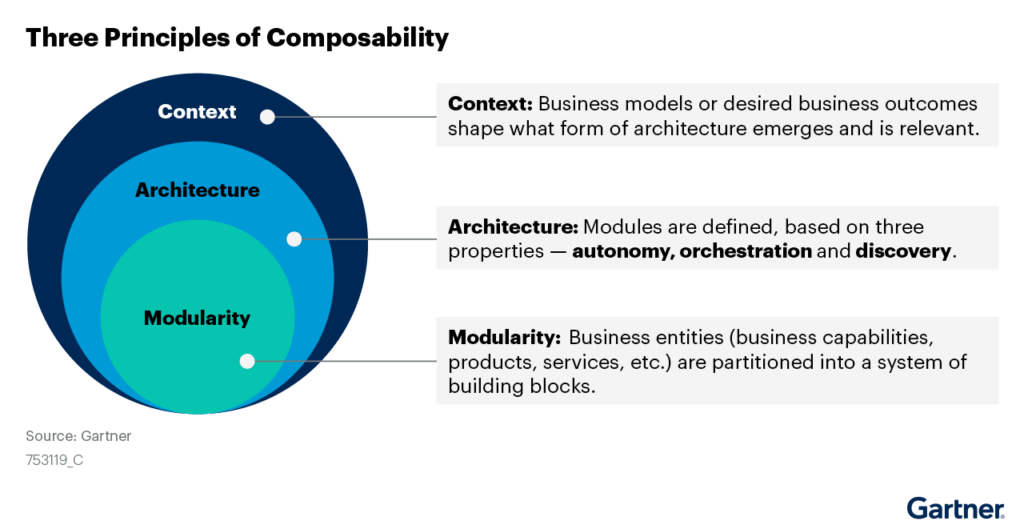Modularity drives retail agility and resilience

Consumer habits are evolving along with industry trends due to the emergence of new technologies and options that seek to offer better shopping experiences. In addition, retailers face totally unexpected situations that force them to adapt immediately and the pandemic was clear proof of this. In this fast-changing and highy volatile scenario, modularity can bring important benefits to retailers to achieve greater agility and resilience in their operations.
Why is modularity key?
According to Gartner, modularity is one of the 3 main principles of a composable architecture.

Modularity allows businesses to change and update parts of their applications without affecting the rest of the system. That makes it easier to respond to market or customer needs changes. Today, if we think in retailers, this concept becomes fundamental. The increasingly frequent emergence of new channels, new technologies and rapid changes in customer habits, among other factors, requires an ever-increasing degree of agility. Increased competitiveness also forces retailers to seek greater differentiation, which also requires their ability to innovate more and faster, something for which modularity becomes indispensable.
Benefits of modularity
Enables greater agility and speed of adoption
From the implementation process to subsequent maintenance, modularity allows retailers to reduce the time required to adopt and adapt the system to anticipated or unforeseen needs.
Offers greater innovativeness and ease of piloting
The ability to test more quickly increases the ability to innovate, and allows pilots of new functionality to be conducted more easily and with a controlled scope that reduces any risk.
Modularity also makes it easier to adopt new innovations released by the technology manufacturer, so you can always be up to date and ahead of the competition.
Facilitates adaptation to different scenarios
With different types of channels and omnichannel scenarios, as well as store types such as flagship, temporary stores and so on, a modular solution facilitates the coverage of different scenarios, also allowing for phased strategies that are better adapted to the needs of each moment.
Enables a reduction in maintenance costs
Modularity also makes it possible to increase the efficiency of the necessary changes, allowing the introduction of new functionalities in a much more controlled way, which reduces maintenance time and costs.
Modularity in Openbravo
Openbravo offers a fully modular platform that adheres to the Gartner principles of a composable architecture. It gives retailers greater adoption flexibility and the freedom to extend their system to specific business needs at their pace. With modularity, retailers can minimize the time and the risk of introducing new innovations. Combined with its API-first architecture, Openbravo helps retailers to adapt and innovate faster and more efficiently, which finally drives greater retail operations agility and resilience.
Openbravo functional modularity
Functional modularity enables retailers to implement some of the standard retail solutions, completely or partially, alone or in combination with others, allowing adaptation to different scenarios. And importantly, without compromising the type of future evolution.
For example, a retailer might decide to only implement Openbravo’s point-of-sale solution for fixed tills in some of its stores. In some of them, it could even implement the solution only at traditional POS and, in others, add the use of self-checkout terminals and mobile terminals. All this integrated with existing systems such as its ERP or eCommerce platform.
In the future, the retailer can expand this scope adding new capabilities such as store inventory, store fulfillment and warehouse management.
Openbravo technical modularity
Technical modularity offers retailers a rich framework for extending or adapting existing functionalities quickly and in a controlled manner, with defined technical rules that ensure their integrity and performance over time. This also facilitates future upgrade processes. We can think, for example, of cases such as the need to modify the standard in-store checkout process or the incorporation of changes in a connector to support changes in the tax regulations of certain countries.




No Comment